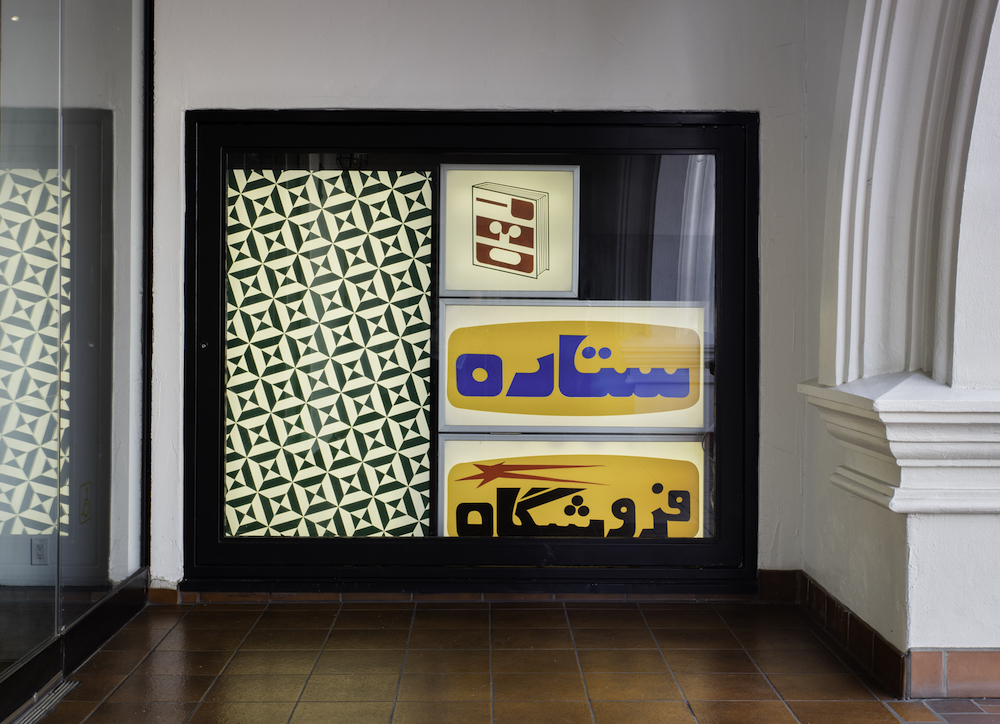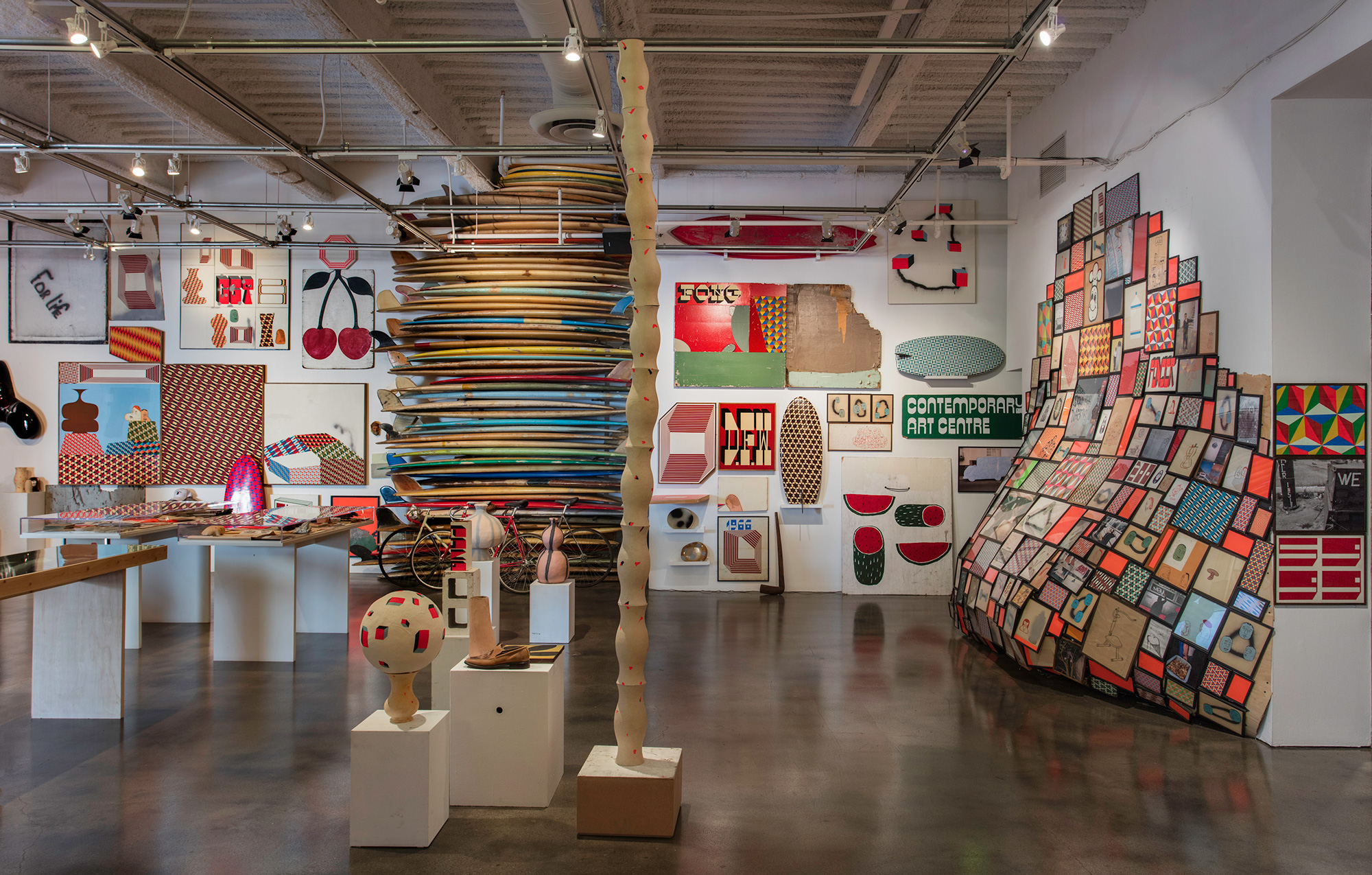
Barry McGee's Summer Intensive
An interview with curator, Alexandra Terry
Interview by Evan Pricco
One of our favorite exhibitions from this summer has been the standout, Barry McGee: SB Mid Summer Intensive, on view currently at the MCA Santa Barbara. Through October 14, the museum will see a “sprawling” installation of paintings, drawings, and sculptures by the San Francisco based artist. Works in the show further develop McGee’s signature folk patterns interspersed with familiar characters and occasional sign-painting styled motifs. However, McGee has also focused more on space, with pattern, faces wafting into thin air on canvas, floating in a backdrop, aged and buffed after years on the streets. Elegant colors and shapes camouflage remnants of spray paint mist.
On the occasion of the exhibition, we sat down with MCASB's Associate Curator, Alexandra Terry, about the story behind the show, Barry's signature California style and how the community of Santa Barbara is taking in the artist's work.
Evan Pricco: What interested you in Barry McGee's works? There is so much in every exhibition, so what was your initial appreciation of the work?
Alexandra Terry: I’ve been following Barry for ages. I first became aware of him in high school when I was introduced to Twist by some friends. I was immediately drawn to his style, and his indelible characters, and this led to my fascination with his ‘studio’ work, and the work of other artists from the Mission School. The relationship between lowbrow and highbrow culture, folk art and outsider art, and communities that are deemed to be on the periphery are issues that Barry and many of his contemporaries have continually engaged in that have always interested me. In addition, elements of Barry’s practice that have been introduced in recent years, such as the geometric abstraction, his ceramics, and his more minimal paintings are equally as engaging and profound for me.
Initially, Barry’s work drew me in because he is able to reflect the human condition, and its fragility, in such a beautiful and subtle way. When it comes to his studio practice, Barry is not one to shout about anything from the rooftop, yet his work speaks volumes about what we are dealing with in the present moment. At times his work has unfairly been pigeonholed as primarily focusing on countercultures (i.e surf, street, etc.), which is not fully representative of his practice. You may not be a surfer or a graffiti artist, but you can relate to the tragedy and the unadulterated joy that is present in Barry’s practice.
To me, there is something quintessentially Californian about Barry's work, but as a curator at a museum in California, how do you convey that feeling to attendees?
Well, it’s funny because I’m fairly new to California. I grew up in Colorado, but I moved to Santa Barbara three years ago from London, and in some ways, I still feel like an outsider looking in when it comes to this idea of a quintessential ‘California culture’. By working with Barry I was exposed to a larger community of artists, surfers, musicians, and creatives who are either California natives or have adopted California as their home. This experience certainly enriched my understanding of Barry’s work in a lot of ways, but I don’t think it’s necessary to be privy to that in order to have a deep connection with the work.
There are so many entry points to Barry’s work, and it’s clear that each visitor reacts to a different aspect of the exhibition with each visit. Even as the curator, I still feel as though I haven’t seen all that there is to see.
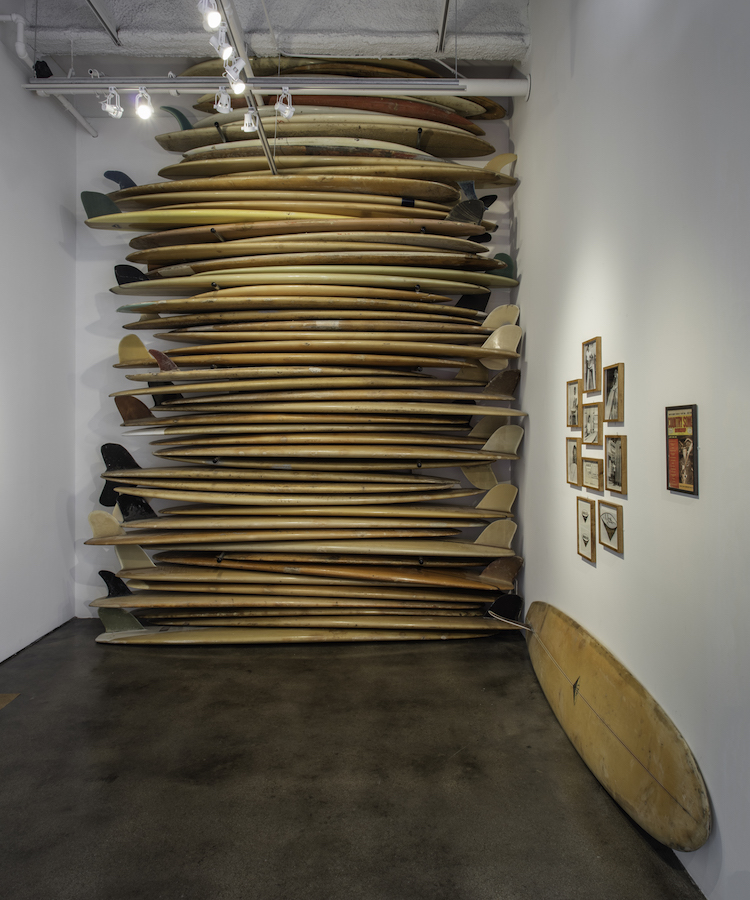
Occasionally, even though graffiti culture has been in museums for years, the story of Barry's graffiti career may be new to a more fine art audience. How do you tell that story to the viewers?
It’s interesting to see visitors to the Museum make the connection that Barry McGee is Twist. I like that because it shows me that his graffiti has made just as much of an impression on a fine art audience as his studio work. It’s because of his hand and this uncanny ability that Barry has to point to things that are so compelling that anyone else may have missed in an initial viewing. I don’t want to get into a whole comparison of the idea of the flâneur in relation to graffiti artists, but Barry really has this innate way of moving through the world and shining a light on something vibrant, even if it comes out of something tragic, dark, or even kind of gross.
Somehow, even if it’s not explicit, Barry’s history, his influences, the things that excite him, his family and friends, everything is present in his installations. You might not be able to put your finger on it but you can feel it. I don’t think it’s important to point to Barry’s graffiti career, and I’m pretty sure that’s not interesting for him anyway in a fine art context. To me, it feels similar to Barry’s relationship with surfing in a way. It’s incredibly important to him on a personal level, and it informs his work. It’s not always about the act (tagging or surfing) itself, as much as it’s about the community that you find yourself a part of while engaging in the act, a shared consciousness, a like-mindedness. And interestingly surfing and tagging are acts you can do in utter solitude, or with others, and that feels reflective of Barry’s process: a balance of solitude and community.
What were some of the things that Barry wanted to show or try out in this show that surprised you?
We approached this exhibition with a very open mind. I was very aware of Barry’s previous exhibitions so really I wanted to be totally open to whatever he might bring to the table. The Museum is not huge, but we wanted to make our space as available as possible to him.
What we really loved is that Barry wanted his opening, and his exhibition, to be immersive and to be a ‘happening’. He invited Scooters For Peace to create a pop-up in one of our off-site storage units, which was an amazing activation for the exhibition. We had musical performances at the opening, and at the end of September, we’re hosting a clothing pop-up, a book signing, a skateboarding event, and more musical performances, all orchestrated by friends and collaborators of Barry’s. Somehow these events don’t feel like a separate ‘program’ but rather they are very much an extension of the exhibition and of the work.
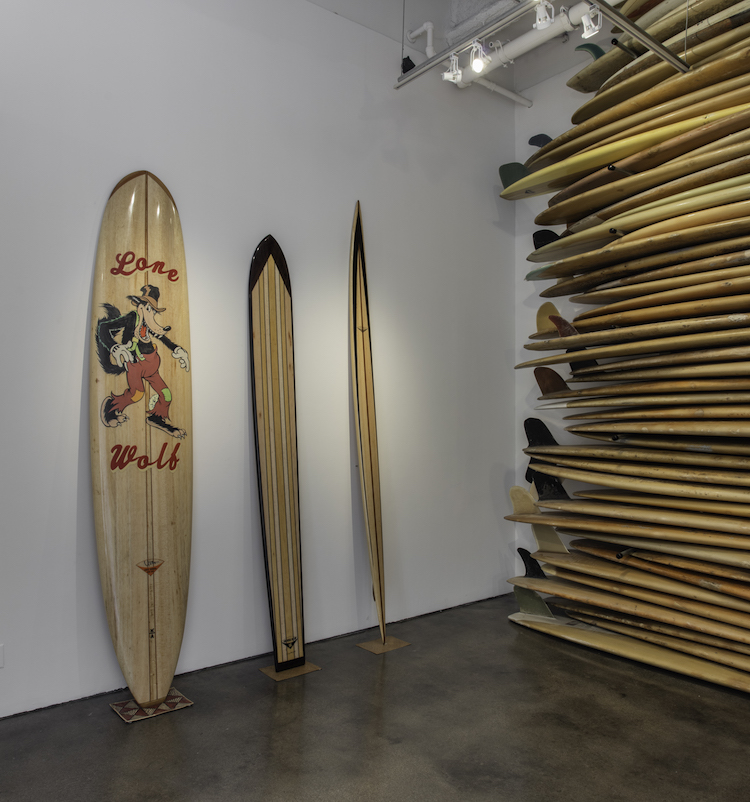
What did you learn about his practice in the prep for this show that you didn't know before?
At one point in the lead up to Barry’s arrival in Santa Barbara for install, he texted me, “I don’t know what I’m doing, Alex.” I laughed because that’s very far from the truth, and yet, until the moment Barry actually does something maybe he doesn’t know what he’s doing. His actions may not be premeditated yet they are executed with an unshakable certainty. Barry knows what he’s doing at every turn, but his certainty seems to grow out of chaos.
What did Barry do for the SB scene in this show?
He created this amazing platform for the community to come together and recognize and celebrate the local creative and surf/skate community. As he’s said, some of the best surfers and surfboard shapers are from Santa Barbara. From the beginning, it was important for Barry to recognize Reynolds ‘Renny’ Yater. Renny, who was one of the first commercial surfboard builders of the 1950s, opened Yater Surfboards in Santa Barbara in 1959. Barry has been collecting Yater boards for years and the Charles Bloom Gallery within the Museum is entirely dedicated to Renny and his ‘functional art’. It was a real pleasure to have Renny present during install and at the opening.
As with other exhibitions, Barry invited influential figures and friends to come up to Santa Barbara from other California locales to contribute their own work. This included surf royalty Herbie and Dibi Fletcher, as well as Tommy Guerrero and Mark Ramos Nishita (who played an amazing set on opening night). However Barry also really took this opportunity to work with locals whom he admires such as Tom Adler and James O’Mahoney. They contributed so much context to the creation of the exhibition.
The Healing Arts Center that appears in the exhibition also deeply touches the community. Museum staff, in addition to local artists who have been invited by the Museum to participate in programming during the duration of the exhibition, were invited by Barry to contribute artwork to the Healing Arts Center. Artwork that Barry has collected over the years, and work that has been gifted by well-known artists, sit side by side work by community artists, anonymously holding space for the creative and curious souls who enter it.
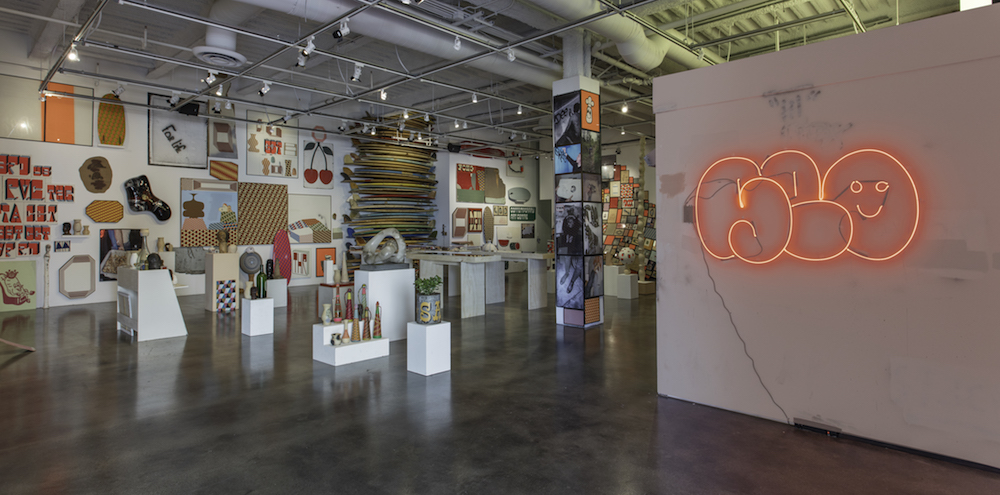
I love this about Barry, and he said it an interview with the museum: " There’s something weird about solo. I don’t like solo. Not one person deserves that, for me the spotlight’s too harsh." But that makes for a really unique exhibition, this idea of collaboration. Was that a special thing that the museum knew they were getting with this show?
I read anecdotes about Barry’s installation process. I knew that his friends and other artists often just show up on the doorstep of whatever space he’s working in, but I had no idea how it was going to play out at MCASB. It was a very unique experience for me and it was inspiring for me to see how Barry builds community wherever he goes. It’s clear that he really thrives off of that. At one point, hours before the show was meant to open, there were anywhere between 20-30 people working to make the show come together, and only a third of them were Museum employees. During install, despite how chaotic it may have looked from the outside, there was an elemental sense of calm, and yet a pressing sense of anticipation about what was going to happen next.
Perhaps what was most captivating for me to witness while working with Barry is his generosity and how he encourages the creative process within everyone he comes into contact with. He has this amazing crew of people working with him and he empowers them to make their own decisions within the ‘Barry McGee’ creative process, which is rare for artists of his caliber.
What's your favorite piece or part of the exhibition?
There are four vitrines in the middle of the gallery space that are almost chest high. They are populated with ephemera, zines, photographs, drawings on napkins, a baguette from the cafe across the street from the Museum, surf fins, small paintings executed by a child, stickers, and notebooks… you get the idea. I love these vitrines because for me they come the closest to illustrating my experience of who Barry is and yet they are full of mystery. As a curator, there is this balancing act when working with an artist where I have to tamp down my impulse to want to ‘understand’ their process while simultaneously reveling in the mystery of the inner workings of their process. That’s where these vitrines exist for me. Here I get a glimpse of how all the singular pieces work together as a whole, albeit an ever-changing and organic whole.
Barry McGee: SB Mid Summer Intensive will be on view at MCA Santa Barbara through October 14, 2018.

